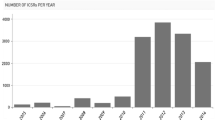Abstract
Commissioned by the Monitoring Medicines project, the Uppsala Monitoring Centre (UMC) led the design and development of a web-based ADR (adverse drug reaction) reporting tool intended for use by patients. The software design was undertaken in close collaboration with representatives of national pharmacovigilance centres (NPCs) and with patient and consumer organizations. The web-based tool was developed by these participants through several telephone conferences, a workshop and site testing. The tool is directly compatible with the UMC’s Individual Case Safety Report (ICSR) data management system VigiFlow® and is also compliant with the ICH-E2B(R2) format. The UMC team benefited by working closely with the end-users during the development process. A major challenge was to balance the need for detailed information required by the NPCs to be able to assess reports with the amount of detail patients are able and willing to provide. Needs, ideas and suggestions from the end users were valuable and were taken into account throughout the process of designing the tool.

Similar content being viewed by others
References
Hazell L, Shakir S. Under-reporting of adverse drug reactions a systematic review. Drug Saf. 2006;29(5):385–96.
Banerjee AK, Okun S, Edwards IR, Wicks P, Smith MY, Mayall SJ, Flamion B, Cleeland C, Basch E. Patient-reported outcome measures in safety event reporting: PROSPER consortium guidance. Drug Saf. 2013;36(12):1129–49.
Monitoring Medicines. www.monitoringmedicines.org. Accessed 19 Feb 2015.
van Hunsel F, Talsma A, van Puijenbroek EP, de Jong-van den Berg L, van Grootheest AC. The proportion of patient reports of suspected ADRs to signal detection in the Netherlands: case–control study. Pharmacoepidemiol Drug Saf. 2011;20(3):286–91.
Van Hunsel F, Härmark L, Pal S, Olsson S, van Grootheest K. Experiences with adverse drug reaction reporting by patients. An 11-country survey. Drug Safety. 2012;35(1):45–60.
Nilsson E. Enhancing public involvement in reporting. Uppsala Reports 52. Uppsala Monitoring Centre; 2011. p. 14.
Go-To-Meeting. http://www.gotomeeting.com/online/entry. Accessed 19 Feb 2015.
http://en.wikipedia.org/wiki/CAPTCHA. Accessed 19 Feb 2015.
Plöen M. Workshop on direct patient reporting. Uppsala Reports 57. Uppsala Monitoring Centre; 2012. p. 10–11.
Tregunno PM, Fink DB, Fernandez-Fernandez C, Lázaro-Bengoa E, Norén GN. Performance of probabilistic method to detect duplicate individual case safety reports. Drug Safety. 2014;37(4):249–58.
Uppsala Monitoring Centre. http://www.who-umc.org. Accessed 19 Feb 2015.
Acknowledgments
We thank the two pilot national pharmacovigilance centres in Croatia and Turkey, and are indebted to the input from Svilen Konov, European AIDS treatment group.
Funding and conflict of interest
The Monitoring Medicines project was funded through the 7th Framework Programme (FP7) of the European Commission (grant 223566).
Monica Plöen, Magnus Wallberg and Sten Olsson have no conflicts of interest that are directly relevant to the content of this study.
Theme issue
This article is part of a theme issue co-edited by Elliot G. Brown, Shanthi Pal, and Sten Olsson. No external funding was used to support the publication of this theme issue.
Author information
Authors and Affiliations
Corresponding author
Electronic supplementary material
Below is the link to the electronic supplementary material.
Rights and permissions
About this article
Cite this article
Plöen, M., Wallberg, M. & Olsson, S. User-Driven Development of a Web-Based Tool for Patient Reporting of Drug-Related Harm. Drug Saf 38, 359–364 (2015). https://doi.org/10.1007/s40264-015-0276-x
Published:
Issue Date:
DOI: https://doi.org/10.1007/s40264-015-0276-x




